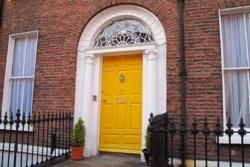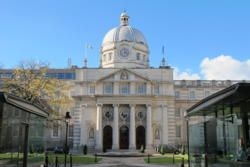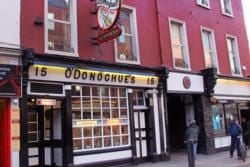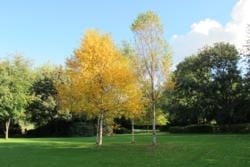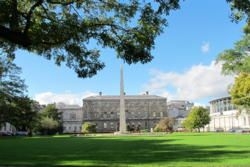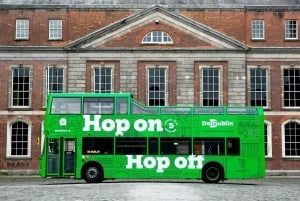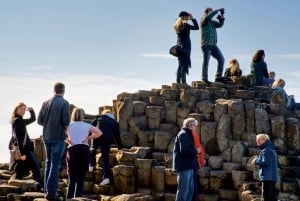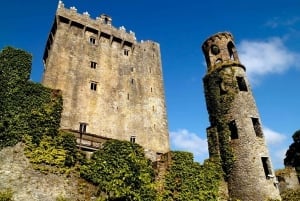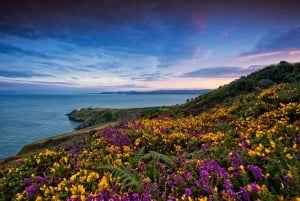Merrion Square + Baggot Street Area
Merrion Square might be small, but it’s a perfectly formed example of the Georgian architecture that once made Dublin one of the swankiest cities in Europe. Construction began on the north side of the Square in 1762 and carried on for 30 years.
Considered one of Dublin’s finest surviving squares, the long terraces offer architecture and design aficionados a selection of ever-more-elaborate front doors, with delicate fanlights above and detailed brass knockers. The adjoining park - designed in the ‘Jardin Anglaise’ style - is somewhat lesser known (and pleasantly, less crowded) than its near neighbour, St Stephen’s Green.
Merrion Square soon became known as a smart address for the aristocracy and professional classes - and remains one of the most desirable addresses in the city. To visit the park, once upon a time you had to be one of the privileged local residents - but now it’s a welcoming public space, perfect for a picnic or to let the kids blow off steam. The weekly Sunday Open Air Art Gallery is a personal favourite - when some 200 artists sell their own work, hanging their paintings from the railings on the west, north and east sides of the Square.
Up to 60 years ago, the houses in the Square were largely residential. The roll call of famous former residents includes writer, artist and mystic George Russell at no. 74; writer Oscar Wilde’s childhood home at no. 1 (now the American College Dublin); politician Daniel ‘The Emancipator’ O’Connell at no. 58; Austrian physicist Erwin Schrödinger at no. 65; poet WB Yeats at no 82; and Gothic novelist Joseph Sheridan Le Fanu, who died at no. 70 (now the Arts Council building). No. 39 was the former site of the British Embassy, until it was burnt to the ground in 1972 during a protest against the Bloody Sunday massacre in Derry.
Today, most of the buildings are used as offices. The National Maternity Hospital is now located here alongside the Irish Georgian Society HQ, the Irish Architectural Archive, the Irish Traditional Music Archive, the Irish Red Cross, the College of Anaesthetists and Society of Antiquarians.
The rectangle between Merrion Square and nearby Kildare Street is crammed full of political and cultural landmarks. In this smallish area, you’ll find Leinster House (seat of the Irish Parliament) and the Government Buildings rubbing shoulders with the National Museum of Ireland (which actually consists of four museums - three of them in Dublin, two of them here: Archaeology and Natural History). If that's not enough to keep you busy for a while, there's also the National Library, Heraldic Museum and National Gallery.
Parallel to Kildare Street is Dawson Street - home to the country’s best bookshop, Hodges Figgis, as well as a smattering of unusual specialty shops. However what’s more interesting for us at any rate is that here - within yards of each other - you’ll find one of the city’s largest, most lavishly decorated bars (Café en Seine) overlooking the smallest (The Dawson Lounge).
Actually, if historic bars are your thing, then you’re probably in the best area of the city right here. Within five minutes’ walk lies literary watering hole McDaids (Harry Street), old school Neary’s (Chatham Street), atmospheric Kehoe’s (South Anne Street), the dripping-in-history Baggot Street pair of O’Donoghue’s and Toners, boozer’s boozer Mulligan’s (on the other side of Trinity College on Poolbeg Street) and the strangely beautiful Long Hall (South Great George’s Street) - the last two (being slightly further afield) are each a slightly longer stroll away, but we’re including them because they definitely belong in this company. So there!
Photos, from top to bottom: Georgian Door; Merrion Square Park; Leinster House; Government Buildings; O'Donoghue's


